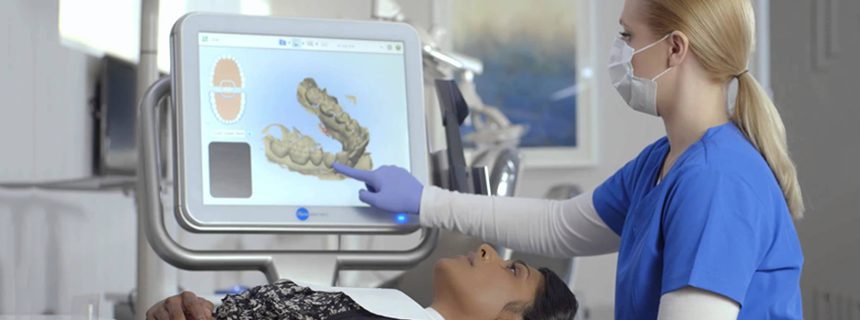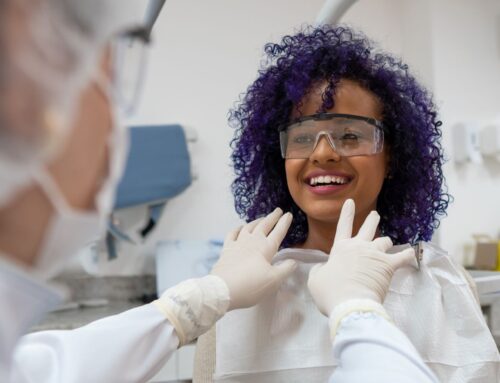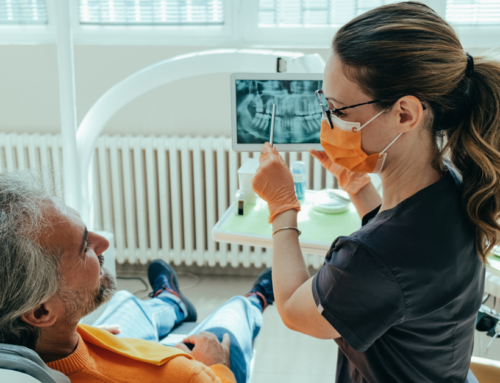The Future of Dental Technology & Advanced Oral Care
Recent years have brought countless new technological innovations, many of which have powerful implications on health care, including dental treatments. Let’s explore some of the most notable new types of dental care technology.
Technology has dramatically changed virtually all aspects of our everyday lives, including how we communicate, how we travel, and perhaps most importantly, how we take care of ourselves. Advancements in healthcare technology have enabled treatments to be developed that would have previously been thought of as nothing but science fiction. The field of dentistry is one such example of how technology has had a major impact on patient care.
Over the last few years, dental care technology has evolved by leaps and bounds, and the benefits to patients are significant. Treatments are less invasive than ever, patients are kept more comfortable during all types of procedures, and even at-home oral hygiene has become far more effective thanks to new products and modern techniques.
At Georgian Dental, we feel it’s important that patients are aware of how the field of dentistry is changing to better serve them and their families, so we’ve gathered together some examples of recent dental technology innovations that are really having a positive impact on the patient experience, as well as on the results of various dental treatments that are available. Let’s get started!
3D & Digital Dental X-Rays
While x-rays themselves are a well-established and crucial part of dentistry, modern x-ray technology is vastly different from what was used in the paste. For starters, x-rays are much faster to conduct as machines are far more efficient, and data is transmitted digitally directly to your dentists’ computer for instant results. In addition, modern x-ray machines are able to provide enough detailed data to render a complete 3D representation of the mouth and teeth, allowing the dentist to see the unseen and make an accurate diagnosis with greater efficiency.
What does this mean for patients? Well, it means less time obtaining the information needed to determine the best course of action for your dental care, and earlier detection of any potential dental health concerns or complications that might be developing in areas that cannot be easily seen with a physical examination. 3D x-rays and digital imaging of the teeth, jaw, and mouth are helping dentists to make more precise recommendations from more accurate information, resulting in better outcomes for their patients, and that’s good news for everyone.
Smart Toothbrushes
We now have smart fridges, smart air conditioners, and smart light bulbs, so it was only a matter of time before smart toothbrushes became available. While brushing your teeth may seem like a very basic habit, you’d be amazed at just how common incorrect tooth brushing habits really are. Many people make simple mistakes when brushing their teeth without ever knowing about it, and these little errors can really add up over time to reduce the overall effectiveness of your oral care habits. Brushing too hard, too aggressively, too lightly, too quickly, too slowly, or for not long enough are all extremely common, but smart toothbrush technology aims to change this situation for the better.
Similar in form to many other types of electric toothbrushes, smart tooth brushes feature additional sensors to continually monitor your brushing action and provide real-time feedback on how well you are doing. For example, if you’re brushing too hard, it will prompt you with a notification. Brush times are monitored, and you’ll automatically be informed when you’ve hit the recommended duration. Some models even feature programmable or personalized brushing profiles, which can be helpful for many people who have special requirements, such as patients with braces for example.
If you’d like to learn more about what specific type of smart toothbrush your dentist would recommend for you, or any other types of at-home oral care habits you may want to try, give the team here at Georgian Dental a call to arrange for your next appointment or consultation.
Dental Virtual Reality
Virtual reality technology has come a long way since its introduction to the public in the late 80s and early 90s. Gone are the blocky, geometric shapes and cartoonish imagery, replaced by hyper-realistic environments rich in immersive sounds and movement. What does this mean for dentistry? Well, some dental practices have begun experimenting with virtual reality as a method of alleviating patient anxiety. By shutting out the clinical environment of a dentist chair and substituting a calming virtual experience tailored to the preferences of the patient, a trip to the dentist is suddenly no more anxiety-inducing than a grassy field or a sunny beach.
Offering a VR experience to patients with anxiety could have the positive result of encouraging greater consistency in dental checkup intervals for those patients. Furthermore, it may also result in gradually reduced need for other types of sedation or anesthetics as the patient naturally remains in a more relaxed state during their treatments. While still in the very early stages of research and testing, the impact of VR technology on the dental patient experience has the potential to be quite impressive.
3D Printing Technology
Fabrication technology has changed substantially thanks to the introduction and evolution of 3D printing. In just a few short years, the level of intricacy, and complexity of 3D-printed objects has increased exponentially. This is further enabled by the expansive range of materials that can now be used in the 3D printing process. For dentists, the implications of 3D printing are profound, saving time and increasing precision across a wide range of dental processes.
For starters, 3D printing is able to produce exact replicas of a patient’s natural teeth, making repairs or replacements match precisely. This includes such things as caps, dentures, bridges, or crowns that are sculpted to perfectly imitate the shapes and curvature of the natural teeth of the patient. The ultimate goal of any tooth repair or replacement procedure needs to be to provide the most natural final result, and 3D printing helps achieve that goal with even greater effectiveness than ever before.
As another example, prior to the advent of 3D printing technology the creation of orthodontic molds for patients in need of braces was a manual process that required multiple steps. Now, from detailed 3D x-rays and digital imaging data, 3D printers can create an exact replica of the patient’s mouth and teeth down to the smallest detail in far less time. Patients quickly receive braces that fit better and feel more comfortable, and as a result are able to proceed through their treatment timeline as efficiently as possible.
Of course, that’s not all that modern 3D printers have to offer for dentists. They’ve also allowed dentists and orthodontists to take advantage of the powerful ability of fabricating their very own custom tools and instruments, designed to achieve specialized objectives in highly specific situations. Drilling templates, spacers, and many more types of dental appliances and tools can now be custom-configured to deliver an optimized and personalized dental treatment experience to the patient.
iTero Element Scanner
The iTero Element is a state-of-the-art scanner primarily used to gain insight into patient’s teeth, gums and jaws to review any oral issues and convey the potential outcome of treatments.
The iTero Element is another in the long list of technologies that help separate us from other dental clinics. This device provides a more comfortable experience for our patients during examinations and lets them see firsthand what the potential treatment results will look like.
Visualization is helpful because dental knowledge shouldn’t be a prerequisite to receiving dental care. The iTero Element’s scanning capabilities is a resource to guide patients toward making the choice that’s right for their oral health and to fully understand what their dentist is recommending.
It works perfectly with clear aligner treatments like Invisalign to create a productive workflow that is proven to reduce fit issues. This technology also works well with traditional braces to create impressions without the mess, while showing the patient what their new smile could look like.
Innovation and Technology Are Driving Dental Care Forward
We never stop looking toward the future of dental care, and how advanced technology and scientific innovation can provide a better experience for our patients and their families. Faster treatment times, greater comfort and peace of mind, and improved outcomes are all goals we strive towards whenever we adopt a new technology in our clinics. As science and technology in dentistry and orthodontics continue to evolve, you can be sure that Georgian Dental is always at the forefront.
Contact us today to arrange for your next appointment and discover the benefits of the latest advancements in dental health care technology.
Appointment Request
If you’re interested in any of our procedures, and would like to meet with one of our dentists to discuss options, costs and get additional information, complete this short form and we’ll give you a call to arrange for a no-obligation appointment at our Barrie clinic.










